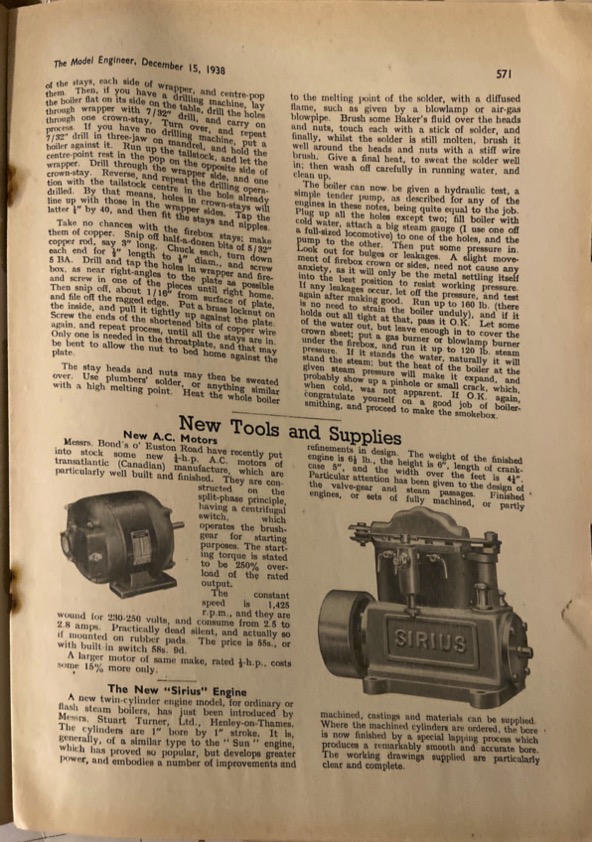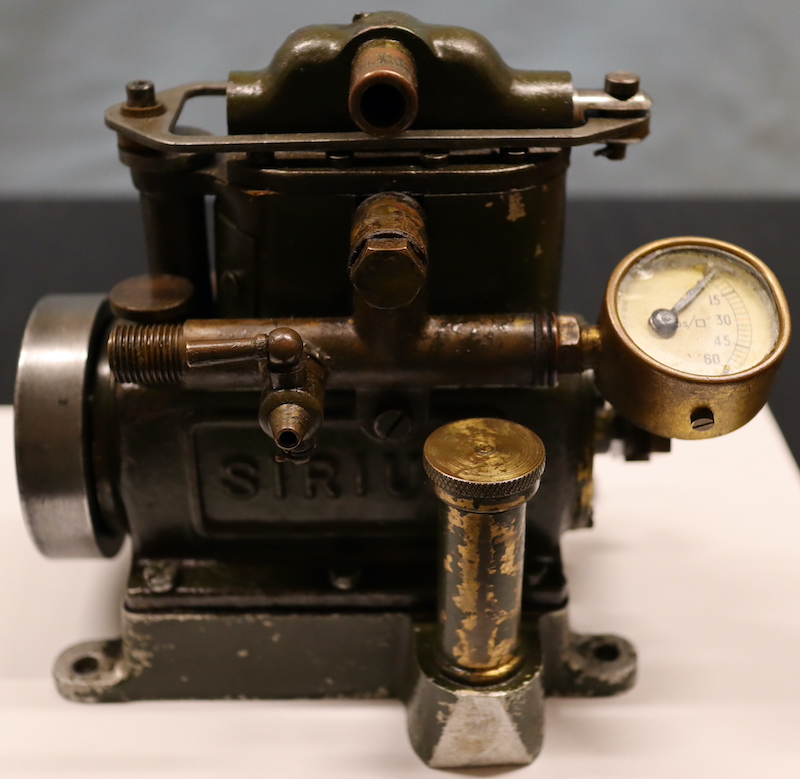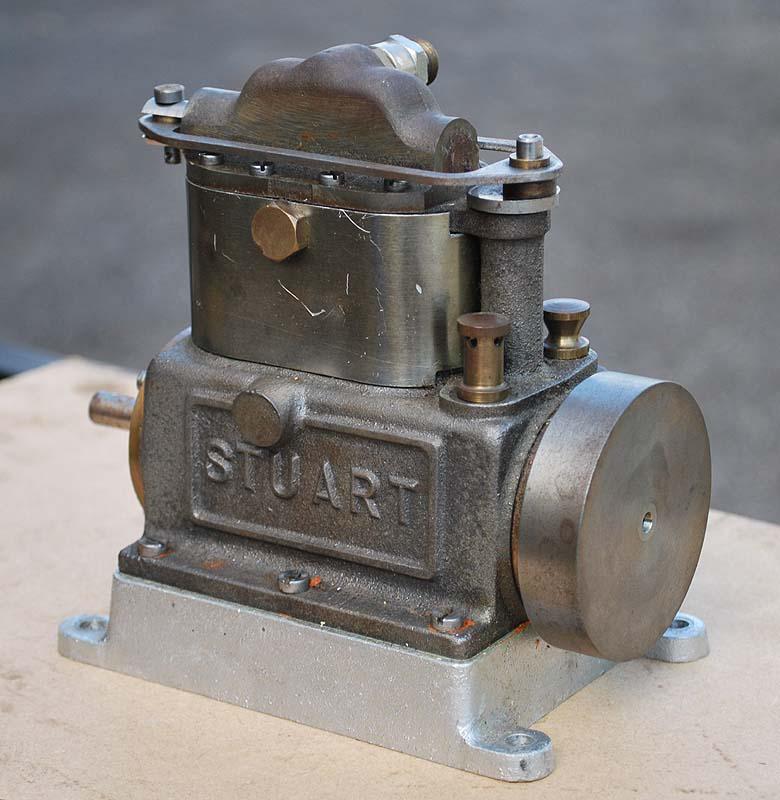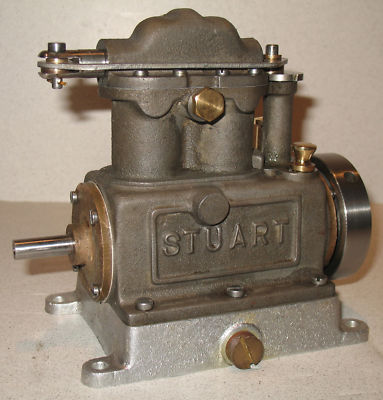Stuart Sirius Engine
About the steam engine that powers the Alco Firefly
The Stuart Sirius is the largest of the Westinghouse-type twin-cylinder single-acting high-speed steam engines manufactured by Stuart Turner, progressing from the Star (the smallest) and the Sun.
 Introduction Advertisement for the Stuart Sirius in Model Engineer, December 15, 1938
Introduction Advertisement for the Stuart Sirius in Model Engineer, December 15, 1938
Introduced on the eve of World War II in late 1938, the Stuart Sirius was fresh on the minds of model engineers and destined to serve. A few years later the engines would be air dropped behind enemy lines doing their part in the Alco Firefly.
The Alco Firefly Stuart Sirius design is slightly different from the prewar and postwar commercial design. A provision was added to the sump casting for an oil filler tube. (This made the engine a tight fit into the sheet metal carrying box, and most of these sump extensions were belt sanded down during final assembly, leaving a trapezoidal patch of bare aluminum, as shown in the photo below.) A provision was also added to the crankcase casting for a manifold support boss that would be milled flat, drilled, and tapped.
 Alco Firefly Stuart Sirius Engine ID 1296 - Front View
Alco Firefly Stuart Sirius Engine ID 1296 - Front View
 Alco Firefly Stuart Sirius Engine ID 1296 - Back View
Alco Firefly Stuart Sirius Engine ID 1296 - Back View
Preproduction Mixup with the Boss?
There are a number of commercial production Sirius engines with the manifold support boss provision present but untouched. In all examples that I have seen, the boss is located on the wrong side of the engine (Stuart-side instead of Sirius-side)!
Could these castings have been the result of a preproduction mixup regarding which side of the engine Ian Bradley wanted the steam inlet manifold? I think so, and features on the Hercules Firefly support this conclusion.
The Hercules Firefly’s engine is a one-off build based on the Stuart Sirius design, but at a larger scale. The crankcase has unused boss provisions cast into both sides. It is apparent that the manifold design/location had not been finalized prior to making the crankcase casting model.
As an engineer who has been in similar second-time-around situations, I think Ian Bradley was acting on what he learned from prior experience. To avoid repeating the past setback, he added a boss on both sides of the crankcase. As it turned out, the final design of the manifold for the Hercules Firefly did not make use of either.
Returning to the Stuart Sirius examples pictured below, if their crankcases were in fact the result of a mixup regarding the Alco Firefly, the crankcases were cast in 1943 or perhaps 1942. Rather than being scrapped, castings with the boss on the wrong side were retained for commercial production.
 Stuart Sirius commercial engine, with boss on wrong side of the crankcase. This engine was sold in 2012 on Station Road Steam.
Stuart Sirius commercial engine, with boss on wrong side of the crankcase. This engine was sold in 2012 on Station Road Steam.
 Same engine, other side, no boss. This engine was sold in 2012 on Station Road Steam.
Same engine, other side, no boss. This engine was sold in 2012 on Station Road Steam.
 Another commercial engine with boss on wrong side. This engine was posted on the forum at www.classicsteamengineering.com by a user from Bremen, Germany.
Another commercial engine with boss on wrong side. This engine was posted on the forum at www.classicsteamengineering.com by a user from Bremen, Germany.
 Yet another commercial engine with boss on wrong side. This engine was sold on eBay and appears in Worthpoint’s Archive.
Yet another commercial engine with boss on wrong side. This engine was sold on eBay and appears in Worthpoint’s Archive.
A video posted to YouTube by “Old Steam” on January 9, 2022, shows another engine with the boss on the wrong side. This engine was assembled from a machined kit available from Stuart. The drawings that came with the kit are dated 6 May 1977. Could the casting have been on the shelf at Stuart for over 30 years? Maybe, but unlikely unless Stuart was pulling product last in first out (LIFO) and replenished castings early for a long time. So, it is possible that this boss feature had nothing to do with the Alco Firefly. (If not, then what is its purpose?) Does anyone have the drawing for the Stuart Sirius from 1977 or earlier showing the boss on the Stuart side of the engine? (Contact us, please!)